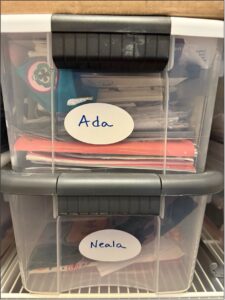My old friend and colleague, Elissa Kim, was recently kind enough to let me interview her for The Together Leader. As I prepared for our conversation by poking around in her Outlook calendar (I’m nothing if not investigative!), I noticed she’d scheduled a daily recurring event called “Yesterbox.”
At first, I couldn’t figure out if Elissa was taking some kind of fancy kickboxing class for 90 minutes every day before noon. But when I finally asked her about this mysterious chunk of time, I was blown away by what she told me. And it takes A LOT to impress me on the topic of Togetherness.
Interested? Curious?! Intrigued!?! You should be!!!
Yesterbox is the code name for how and when Elissa answers her email – FROM THE DAY BEFORE. She gives all credit to her mentor, Tony Hsieh, the founder of Zappos, with whom I’m maybe, just maybe, a little obsessed. Tony, are you reading this? I am a Zappos VIP! I heart you!!
Back to business. You can read more about Yesterbox here. Tony explains his methods better than I ever could, but here’s why I love it:
Tony and Elissa’s Yesterbox system is all about organizational culture and personal discipline. In a nutshell, once per day, preferably before noon, you process all of your email from the day before. You have a few clear choices about what to do with each email – delete, reply, or defer for later by scheduling time to address it in your calendar. While you may peek at your email all day long to monitor for anything urgent, Yesterbox requires you to have the discipline to not answer anything non-urgent until the next day.
I use Outlook’s Delayed Send feature to get at the same outcome; I basically don’t want anyone to expect immediate responses from me. This is because once I set that expectation, then people will come to expect that I reply immediately and worry about my reliability when I do not reply! Plus, like many of you, I’m rarely behind a computer all day.
Yesterbox doesn’t rely on gimmicks like re-sending yourself email. It’s non-frenetic, unlike the LIFO (last in, first out) approach described in How Google Works and non-obsessive (see Inbox Zero movement). Instead, Yesterbox requires both personal discipline to not send half-baked emails while on a conference call, AND organizational or team expectations about realistic response times that are reliably, not immediately, responsive.
I’m so in. Email plagues me because 1) I get a lot of it 2) I am often offline for 2 or 3 days leading trainings and 3) I hate all the apps, gimmicks and tricks to manage your email that take more work than actually just going through it.
Here’s my Yesterbox that I’m working through on a plane to Kansas City – only two left. I’m not even looking at the “Today” stuff, and I follow Tony’s advice to keep it hidden so I’m not tempted. I mean, I do have a book to revise and all!

One disclaimer: I will not use my inbox as a To-Do list like Tony does, because I have a lot of other To-Do’s unrelated to my email. Like finishing that third draft of The Together Leader. Ahem.
Yesterbox time is officially in my calendar. I’ll report back on how it goes. Anyone else willing to try it out with me?


